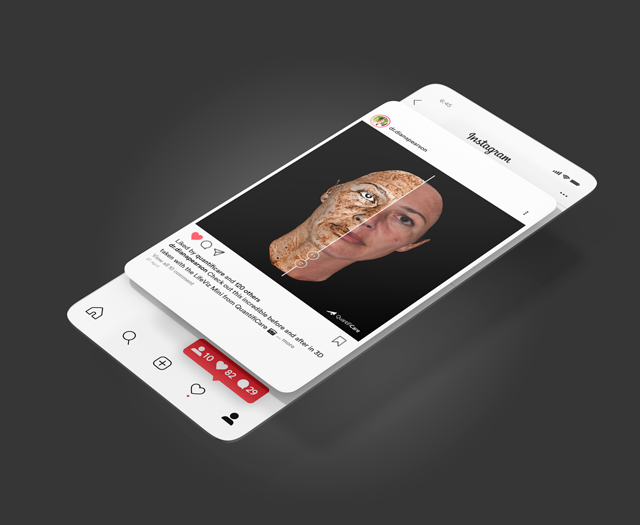Clinical photography: the eloquence of images goes on
« Pictorial languages are how we all started to communicate…People have always been visual – our brains are wired for images.» Instagram co-founder, Kevin Systrom.
From a marketing perspective, reputations can be built and dismantled through the sheer power of images. Aesthetic medicine is no exception: patients are increasingly image-conscious but also visually connected via social media. When it comes to spending on their appearance, they want to see what they are investing in and what’s more, they will instinctively share results with their peers online.
Creating a positive buzz on social media will lead to referrals. Word of mouth remains the most effective form of publicity.1
More than ever, clinical photography needs to be high quality, impactful and relevant. Many practitioners have already understood its value in helping to convince patients in terms of treatments and results, in generating trust, building reputation and loyalty.
In the field, clinical photography can provide invaluable insights for treatment-planning; make explanations easier for patients to understand during consultations and therefore help manage their expectations; serve as a monitoring and comparison tool in documenting facial and body changes; is excellent for visibly tracking progress and can potentially provide quality research and archive material.
However, clinical photography can have its challenges. One is obtaining an image that can be used. Standardization is so important, especially for before and after images and precise comparisons. Appropriate lighting, correct positioning, uniform background and getting to grips with a particular photographic device will all count in achieving the consistent quality required. Patients increasingly expect high quality images from doctors and practitioners may struggle to provide it themselves, resorting to hiring clinical photographers. Archiving, cataloguing and retrieval are often time-consuming and complicated, making precise clinical comparisons difficult.
The good news is that portable, compact devices exist that are professional standard, hi tech, accessible, easy and quick to use. With LifeViz clinical photography solutions, the required level of image quality and standardization can be achieved in a very simple way as their designers have integrated AI to automate image processing and classification operations, using the most advanced devices such as hybrids with Wi-Fi. Standardized, high quality 3D images are quickly generated, with easy retrieval for effective comparing and sharing. As the face and body are 3D shapes, 3D image technology really makes sense. Nor is ageing a 2-dimensional process. The more closely patients can relate to what they are seeing, the better. A reassured patient is indeed a satisfied one.
Today, in a sector that continues to show signs of expansion, aesthetic medicine practitioners are understandably keen to invest in developing their practice in terms of latest treatments and the devices that go with them. However, investment should also include essential tools that are part of the skills expected by the patient in this digital age. LifeViz clinical photography solutions provide practitioners, who are so often under pressure, with access to technology that saves time, enhances the quality of care, generates patient satisfaction and trust, potentially leading to a higher ROI and the growth of their practice.
The eloquence of images goes on. It always has.
1. https://myappworx.com/the-importance-of-clinical-photography-in-aesthetic-medicine/

